- Home
- ~ Essential Packing List
Suggested Packing List for Your Camino de Santiago
Here is my personal Camino de Santiago packing list that I offer as a suggestion for your own trip planning. If you are taking a walking pilgrimage to Santiago de Compostela and plan on carrying a backpack, I hope my own list of items will help guide you when you put together your own checklist of travel items.
The key to a happy Camino is to travel light. Closely examine your needs and your priorities. What is a luxury? What is a necessity? Do I have the wisdom to discern the difference?
Your backpack is your lifeline on your Camino, however, it is imperative that it is as light as possible to make your Camino a more tolerable experience! In fact, many advise to keep your backpack weight at only 10% of your body weight. This is only about 12-15 pounds for the average female and about 18-21 pounds for the average male!
If you are a strong walker/hiker, you can go higher with your backpack weight. I personally, being a very experienced hiker and backpacker, went to 18-20 pounds (even though I only weigh about 130), including water and food for the day. I was very comfortable with this weight and averaged about 3 miles/hour (5 km/hr) on all of my Camino stages.
The key to your best Camino is learning how to pack lightly. This is the best of my packing tips! There is no perfect packing list for everyone, so your own discernment is the key. What is necessary for you may not be for me. My checklist will be food for your thought, to get you started!
One of my most important lessons from watching other pilgrims, is that if you pack too much weight, you can always forward on what you don't need but want to keep through Ivar's luggage storage service in Santiago de Compostela. I have seen many a pilgrim struggle with pride, under too much weight in their pack! Don't let this be you!
Packing List ~ Top Essentials
- Credential - To get your credential prior to leaving, if you are in the USA, check out the American Pilgrims on the Camino website. Or from anywhere in the world, check out Ivar's Camino Forum. Ivar also offers a nice plastic protective case to keep your credential protected. You can also get your credential at pilgrim's albergues, cathedrals and tourist offices. Inquire in the town where you begin your Camino.
- Scallop Shell - an essential to identify yourself as a pilgrim. Get one at home or at the start of your Camino. Affix it somewhere where it can be seen. I put it on the back of my backpack.
- Passport - Goes without saying - you obviously need it!
- Credit Cards/Cash - take two different types of cards, in the event one doesn't work. I have heard stories of cards not working, but my World MasterCard was never rejected, anywhere in Europe, ever. You may consider taking a MasterCard AND a VISA to be sure. Take a back up of USD (or your currency) that you keep hidden in the event of an emergency. You can get Euro immediately in the airport at an ATM when you land. I only ever had trouble finding an ATM in the remote sections of the Camino Primitivo. Take out only what you need to get you through two to three days. That way if your things are stolen, you don't lose much. Hide money on your person too - in a zipped pocket, so you are never destitute.
- Digital Guide/Guide Book - Please consider supporting this website and check out my own eBooks I have for sale, on many Caminos. Many readers tell me how helpful they are! For Caminos that I don't cover, like the Francés, you can go to Amazon Camino Guides to search for digital guides there. This will lighten your load immensely. Plus there is so much information and infrastructure supporting the Caminos, that you can always find information at the tourist booths. Look for them in every town. They are everywhere. Leave the books at home. This is a serious packing tip to manage your weight.
- Plastic Baggies - Another one of my best packing tips is to ditch the travel storage cubes and use quart and gallon-size baggies. Everything can be stored in them, from cosmetics to underwear. Take extras. They weigh nothing and are incredibly useful to organize and compartmentalize you packing list. You can place your used toilet tissue in them too, to pack out instead of leaving the TP on the Camino! You may also want to consider a sturdier type of TSA-Approved Quart size bag. Some pilgrims dislike the sound of plastic baggies rustling early in the morning, so these may be a good investment for your travel adventures. I found them to be quite nice.
- Carabiners and/or Gear Ties - In my humble opinion, these are essentials on your packing list. I used the carabiners to clip the pair of shoes/sandals I wasn't wearing to the outside of my pack. I clipped my rain jacket from a loop inside the jacket to the outside of my pack on threatening rain days, for easy access. I clipped my drawstring backpack also to the outside of my pack, filled with food (see photo of my pack, below). I find the clip-type biner, vs. the screw-type are easier to manage. Anything you want at your immediate disposal, it is convenient to clip to the outside of your pack with a carabiner. You can also use gear ties for this purpose. The gear ties are phenomenal to organize any cords/ear phones you have. Just loop up your cords and tie them with the gear tie. They are stronger than twist ties, but rubber bands and twist ties work well too, if you are on a budget. A larger gear tie can also be doubled and fashioned into an S-hook, to create a hook to put over the shower to hang your clothes and things. On one of my Caminos, I had my cell phone's belt clip break. It was the part that held the phone in the plastic case. Now I use my cell phone for it's camera, digital guide and maps. I wanted it handy on my belt! I used a long gear tie to secure the phone on the clip, still keeping it accessible! Better than duct tape! Gear ties tie all sorts of things together, and come in quite handy!
- Cell Phone/Charging Cord/European Plug Adapter - I use my phone for everything. A camera, a voice journaling tool, for access to digital guides, as a phone to call ahead for reservations or for a taxi, if needed, a compass app, a flashlight app, a music player, a mirror app, an alarm clock, for google maps to find directions and of course for a Wifi device to keep in touch with friends and family back home. Don't forget your electrical plug adapter so you can plug in your devices. I used one that could receive both a USB and regular connection. That way I could charge more than one device at a time. This is important, because outlets are always difficult to find. If you can afford it, get an international data plan prior to your trip. It is worth it, especially if you need access to information in an urgent/emergent situation, such as if you get lost. Wifi is ubiquitous, so you won't burn through much data, if you keep your Wifi connection on. For me, a data plan was absolutely essential. If you feel the same, add it to your checklist of things to do.
- Back-Up External Battery Pack - Since I used my phone so much, I found it imperative to take a back up external battery pack, for long walking days in remote areas. I did NOT want to run out of juice if I needed my phone. This does not add a whole lot of weight to your pack.
My Packing List ~ Clothing and Underwear
Some general packing tips are in order, regarding what clothing to include in your personal packing list.
- First, the northwestern regions of Spain, especially Galicia are very humid and wet any time of the year. Even items that were sold to me as "quick-dry" did not always dry overnight. For this reason, absolutely, do not include cotton clothing on your packing list, in any way, shape or form. I know there are regions along the Caminos that are hot and dry. While cotton clothing may be more comfortable in these areas, most likely you are still going to sweat. High-tech synthetic fabrics will wick away sweat and dry faster. Also consider ultra lightweight Merino wool or silk, if you prefer natural fibers. I did not use this myself, but some folks swear by them.
- Secondly, every piece of clothing I tried my hardest to ensure that it could do double-duty. Leggings used as long underwear OR pajamas as well as regular clothing. Shirts that can be converted into short or long sleeves. Pants that are convertible. Swim shorts that double as regular shorts and so forth. This will help greatly reduce your weight in your backpack.
- Thirdly, keep in mind that you will be washing out your clothes on a daily basis, to always have one clean set of clothing at any given time. I would arrive at the albergue, shower, wash out my clothes and put on my clean set of clothes for the evening and into the next day. If I kept the same outer shirt for hiking and the same outer shirt for the evening, I could get by with washing my "evening" shirt less than every day. This system only worked if my "hiking" shirt was dry enough to wear the next morning. Underwear, for sure, will need to be washed out every day. The rest of your clothes can be washed according to your personal comfort/hygiene/smell levels! Even so, my packing list is heavy on clothing. Men, you can most like limit your pack list further. Lucky you!
- Finally, if you are walking for weeks or months, you will need clothing that will hold up to many wearing and washings. Buy the best high tech fabrics that you can afford. Don't bring half-worn out clothing, unless you are making this your fashion statement.
Here is my clothing packing list:
- Two Hiking Shirts, convertible sleeves. Roll-up sleeves are fantastic to convert from long to short sleeves. If you are hiking in the extreme heat, you may wish to look into convertible short to cap sleeves, which I have also seen. These should be of synthetic fiber and quick dry.
- Two High Tech Short Sleeve Tops (F) or T-Shirts (M). These should be moisture-wicking, non-cotton, poly or natural fabric. Invaluable for staying cool and drying out quickly.
- Two Pair of Lightweight, Water Resistant Pants, convertible or roll up. I prefer the roll-up to capri-length style, because I find it very clumsy to use the zippers of convertible pants. The zipping off is easy, but the zipping back on when you want is very difficult. I always struggle to find the right way the zipper goes, and on which leg! Besides, capris are not all that much different than the longer shorts I wear. Chose the heaviness of the fabric depending on the season you plan to hike. If you are going over mountains, prepare for ALL seasons.
- One Skirt or Sarong to wear in the evening to church or dinner. Obviously, men don't need this. I used a large, ultralight scarf as a wrap over tights for the evening. Worked like a charm and weighed almost nothing. A skirt is entirely optional.
- One Pair Hiking Shorts (optional) I felt I absolutely had to have a pair of shorts. Men, you could take 2 pair of hiking shorts in lieu of the skirt and leggings.
- 2 Bras (F) - I chose regular, some prefer sports bras.
- 3 Pairs Hiking Socks - lots have been written in the forums regarding what type of foot/sock system work. All I can say is that if you don't have long-distance walking experience you will have to experiment. Find what works for you! Visit the Camino Forums to see what others like. Whatever you choose, don't scrimp. Your feet will be your best friend or your worst nightmare if you don't get it right. In the past I have used the Injinji Toe Sock Liners. The individual "fingers" keep my toes from rubbing, which they are prone to do. Since blisters are a result of friction and moisture, the toe socks may be your best bet For the outer layer, I liked both the Darn Tough and the Thorlo brands. Maybe the Thorlo's had a bit more padding to cushion the feet, but either pair in combination with the Injinji liners prevented blisters on my entire Camino. The Darn Toughs, true to their name, showed no wear. Add shoes or boots that are one full size larger than you usually wear and your feet should be trouble free! Some folks feel that TWO pairs of socks are enough, but if you have sweaty feat, and wish to change out during the day, I recommend three. Plus socks are so easy to lose!
- 3 Pairs Underwear (Bottoms) Again, I can't stress enough that your underwear bottoms need to be of a quick-dry, high tech fabric. I had to hang my underwear off my pack to dry the next day, on more than one occasion when it was too wet and humid to dry overnight. This may sound gross, but I used the smallest, lacy undies, and doubled its use as a washcloth in the shower. I got the underwear and my body clean at the same time!
- One Pair Tights (F)/Leggings (F)/Long Underwear (M) - Optional. I use these for multi-purpose as pajamas, long underwear and to wear under my wrap in the evening. If it happens to be cold one day, these plus upper body layers add warmth both day and night. If you are traveling in the summer, consider capri-length or just a wrap skirt.
- One Long-Sleeve Polypro Underwear Top - To use as a warm layer for night or day, if traveling in cooler weather or walking in the mountains.
- One Pair of Swim Shorts/Bathing Suit - Purely optional if you plan to swim. I used a sports bra that could pass as a swim top and swim shorts for women that could double as shorts with or without my leggings underneath. I did not carry a separate swimsuit. Most likely you won't be swimming anyway, unless you are walking the coasts, visiting the thermals in Ourense or walking to Finisterre or Muxía.
Packing List ~ Blister Prevention
As mentioned above, the Injinji toe socks may be all you need. But after many Caminos, in the fair weather, I found that my feet just got too hot with two pairs of socks! Since heat, moisture and friction are the causes of blisters, I decided that I must do something about the heat part! I was still getting blisters.
- Engo Blister Prevention Patches - These handy little patches are placed on the shoe, not on the foot. They create a sliding surface to prevent friction where your shoe usually rubs your foot. They come in different sizes to accommodate the area of the shoe that needs protection. I just started using these on my last Camino, and indeed, I got absolutely no blisters after 27 days of walking! I am a convert!
- Silicone Toe Gel Caps - Finally, I found a life saver to prevent friction on my poor little toes that always seem to get blisters, no matter what I do! When I felt the first "niggle" on the top of my 3rd toe, on my last Camino, I immediately started wearing a gel cap. The niggle never turned into a blister, only a callous where I am sure a blister would have developed otherwise! The gel caps are strong, and just one lasted me over three weeks of walking. I just washed it out and reused it! A miracle product! I will never leave home without them again.
My Packing List ~ Outerwear
Outerwear geared for the rain are absolutely essential items on your packing list. Also keep in mind that if you are coming from the southern Caminos, it gets progressively cooler as you travel north! Galicia is a lot cooler than than southern Spain and Portugal, so you may not need warm clothes and/or rain gear initially, but you will need it later.
Here is what I personally considered to be the most important items.
- One Fleece Jacket/Quick-Dry Mid-Layer - I chose a lightweight, black, hooded, versatile fleece jacket as a mid-layer on my first Camino. While hiking in a torrential downpour, the fleece got soaked around the edges; the hood, the sleeves and the neckline. It did NOT dry out in 24 hours. My next Camino, I substituted a high-tech mid-layer fleece jacket without a hood and added a head layer. If you are traveling in cooler weather, you may need a packable ultralight down mid-layer as well. I have only walked in spring and fall months.
- High Tech Rain Jacket - I used the Sierra Designs Brand, but this is a personal choice. (If you think you need a new rain jacket, you may wish to consider treating your current jacket with a waterproofing spray to refresh it's water resistance. You could save yourself a lot of money over buying a new rain jacket. I used the brand Nikwax and it worked great! Just make sure you wash it in a specialized tech wash first to make sure it is free of dirt and body oils. This will ensure a more effective treatment.)
- High Tech Water Resistant Hiking Pants and/or Rain Pants - Consider NOT taking rain pants. If they are nylon, and you are walking during the warmer months, they will be too hot. Instead, take a hi-tech, water resistant pair of hiking pants. They will be more breathable and really do keep you quite dry. If you walk in a torrential downpour for any length of time, you will eventually get wet, regardless of the type of pant. Buy the best water-resistant, breathable pants that you can afford. I took a nylon pair of rain pants on my first Camino. All my many Caminos later, I stuck with water-resistant hiking pants and a rain poncho and they kept me sufficiently warm, and mostly dry unless it rained all day.
- Rain Poncho to fit over Body and Pack - This is optional and many folks debate on this one. I used a rain jacket and pack rain cover and stayed dry enough in light rain. But when there was a real downpour, I added the ultra-cheap, ultra-light weight poncho as a extra precaution. I managed to stay dry despite pouring rain!
- Pack Rain Cover - optional if you use a rain poncho. My backpack came with a rain cover when I purchased it. This feature could be a determining factor for you - it is a very handy item and it kept my pack sufficiently dry.
- Umbrella - This is optional! Indeed, I saw some pilgrims hiking with an umbrella. To each his own! Adds too much weight for me to consider for my packing list.
- One Pair Hiking Boots/Shoes - For my first Camino, I used a pair of Merrell trail shoes. No heavy ankle boots for me. I loved them! My next Caminos I wore a Keen low-top. They were sufficiently rugged on the hills of the Primitivo and the cobblestone of Portugal! The Keens have a wider foot base - which is handy for me, and they were wonderful as well. Most recently I have used the Altra Trail Runner, the Lone Peak Model, instead of a more rugged trail shoe. They are ultra-light weight, dry out quickly, but are less supportive with a pack. I used poles on the rocky, more rugged sections to help me there. They were so amazingly comfortable, and I had much happier feet wearing them. I think I am an Altra convert! Between the Merrells and the Altras - for me it will be a hard decision going forward. Buying one size larger than I usually wear also helped prevent foot problems due to swelling feet. Every individual will have to decide what works for them. Just be sure to test them sufficiently before you go AND consider the terrain and the weather you will be walking in. Also consider waterproofing (Gore Tex) in your shoes OR use a Tech Wash and Nikwax to waterproof a comfortable pair you already own.
- One Pair Hiking Sandals - I used the classic Teva sandals the first time around. I used the Keen Arroyo Sandal the second time around. They are heavier to carry, but I walked up to 15 km one day in them. They were also a bit dressier for evening wear, and I liked the covered toe box. Consider the time of year and how much your feet sweat when you chose what type footwear that works best for you. More recently, I have used the Crocs Stride Lite Sandal. They are dressy-looking and ultralight, and I loved this feature for carrying less weight! I did not walk in them for any length, though, as they are less supportive.
- Sun Hat - I usually use a baseball-style cap, but there are many to choose from that are light weight and protect you from the sun. I like the new styles now which have a hole for a pony tail, that is higher that the usual back open air. It works great if you have long hair. Also, a visor may be cooler and also will work for ponytails! I tuck a moistened bandanna under the back of my baseball cap or visor on really hot days to help cool me and protect my neck from the sun. I learned this trick from the lawn workers in my neighborhood in Denver. It works like a charm.
- Bandana(s)/Buffs - multiple uses as wash cloth, scarf, sweat band, neck sun protector (see above) or a night cap. I took one of each! I love these versatile items! If you are walking in cold weather, consider a warmer hat/cap. For me these versatile items are essential on my packing list most times of the year.
- Sunglasses/Leash - I am always dropping or losing sunglasses. I use a leash on my reading glasses and my sunglasses for this reason. Some hiking shirts now also have a small loop on the front to put your glasses arm through and it stays there. Yet another reason to consider hiking shirts over regular ones.
- Reading Glasses/Contacts/Eye Care Supplies - if needed. Consider an eyeglass repair kit too on your packing list. I have a teeny-tiny one that has no weight, but came in handy several times.
- Gloves, depending on the weather. I have walked in the spring, late summer and fall thus far. I have used my lightweight gloves several times in the cooler mornings. I despise cold hands and/or feet, and I like gloves because I use hiking poles.
My Packing List ~ Gear
The gear you chose for your packing list is very personal. There are almost as many recommendations as there are people! Here is mine:
- J28 Gregory Backpack (Men-Z30 equivalent) - This is an all-day size mountaineering backpack that is the most comfortable pack I have ever worn - and I have done a LOT of mountaineering. The size of your pack is a personal choice. This size was plenty big for me, with lots of compartments to stash stuff.
- Ultra-Light Trekking Poles, telescoping or foldable are much easier to pack for the flight and for stashing in the backpack, to prevent theft in the albergues. For me, the lighter the hiking poles, the better. I use the Black Diamond Z-Poles, made of carbon fiber, not of aluminum. Pricey, but for me the only way to go. My husband uses the regular weight Z-poles made of aluminum. They are a bit stronger and he likes them because he is harder on equipment than I am.
- Water Hydration Bladder and/or Water Bottles - I use the 1.5 liter Platypus as part of my hydration system included in my backpack. I like to always carry a hydration bladder. Depending on the availability of potable water on the days route, determines the amount of water I carry, because water is very heavy. If I know there are lots of fountains (fuentes) along the way, I only fill the reservoir with one or less liters. I am a water sipper, and prefer to take frequent sips from my hydration reservoir as I go. In addition, I always also carry an ultralight, disposable plastic water bottle found everywhere in stores. I use this for a quick fill for a long drink at each fountain I pass. Often there are many public fountains along the Camino, that whenever I pass one, I fill my empty plastic water bottle, and take a long drink. Then I replace it in my pack empty! This system, I thought was the best of both worlds. I never had to refill my hydration pouch along the way, which saved on time, yet I always had a back-up for water in the event there were no fountains. I also was able to sip as I went, keeping my mouth moist.
- Headlamp and extra batteries for it. If you want to hike in the dark this is an essential. I took one and never used it. I found the waymarks way too difficult to find in the dark, and I chose to start walking at daybreak. I also use a flashlight app on my cell phone for a light in the albergues when I needed it. Often the light of the phone itself was sufficient. This is more courteous than shining your headlamp in someone's eyes.
- Emergency Blanket - These very inexpensive, silver reflective blankets weigh almost nothing and are essential for survival if you get caught in the outdoors. It can be used as a wrap and as a shelter. Throw a couple in your pack. Also doubles as a picnic blanket. Consider matches, whistle and other survival essentials if you are walking alone and/or over the mountains. Otherwise, these are optional on your packing list.
- Food-Related/Miscellaneous Items. On my first Camino, I took a pocket knife, a spork, a plastic plate and a corkscrew. I suppose I imagined lots of picnics along the Way, so much that I would be willing to schlep a bottle of wine in a pack every day! Needless to say, none of these items are on my current packing list. Also remember if you plan on carrying a knife it will have to be in a checked bag. Some men never leave home without their multi-tool. For bladeless, TSA-approved, travel multi-tool suggestions, click here. Leatherman, Gerber and SOG all make them. Apparently, if you take it out of your pack and show the TSA that it is bladeless, you can carry it on. I have read about this repeatedly on Ivar's Camino Forum and the APOC facebook page.
My Packing List ~ Comfort Travel Essentials
Whether or not these items on your packing list are essential or luxuries, is up to you.
- Travel Pillow and/or Neck Pillow- The albergues give pillows, but to be sure of the cleanliness and comfort, consider taking your own travel pillow. There are many, ultralight ones these days. I use the XL Exped air pillow. It is worth its weight in gold, coming in at only a few ounces. If you want to take a neck pillow to use on the plane, this can maybe double as your nightly pillow. I also double the use of my travel pillow as a seat/meditation cushion, if I stop along the Camino for a respite or a picnic lunch.
- Contoured Sleep Mask - this is an essential if you are a light sleeper and disturbed by light in the airplane, or outside your window or in the bunk bed next to you as other pilgrims come and go with headlamps when you are trying to sleep. I find the contoured eye masks to be the most comfortable, as you are able to open your eyes while wearing them without clipping your eyelashes.
- Silicone Ear Plugs - the Spaniards (and some pilgrims) are party people and most building walls are paper thin. We won't even discuss the issue of snoring. Ear plugs are essential if you wish to get a good nights sleep. The regular kind that are used in construction, that you buy at hardware stores are worthless, in my opinion, so put the silicone type on your packing list instead.
- Large Microfiber Towel/Wash Cloth - Unless you are staying in hotels every night, the albergues do not give you towels. Some nicer private and more expensive albergues do give towels. No where in Europe do they give you wash cloths, in hotels or anywhere. After drying my towel, I would hang it up across the front of my bed to create a nice privacy screen. You will need a travel clothesline or a string to do this. My towel can also double as a blanket on the bed, if none are available, or they are sketchy as far as cleanliness. If I know I need it for a blanket, I use the smaller wash cloth to dry myself. Tricky, but doable. It has also been recommended to me, and I bought a very small (hand/face size), quick-drying Turkish towel called Peshtemal that you may want to consider instead of microfiber. They are made of cotton and super-absorbent for so small a size. I have tested them at home and the small size is sufficient to dry both my body and long hair! I will be taking it on my next Camino. The Peshtemal towels can also double as a scarf, but unless you buy the large size, they will not double as a blanket. The Peshtemal feels SO much better on your skin than the microfiber, in my humble opinion. (I may even skip the washcloth and use my underwear for one instead! Ha ha - I am turning into a minimalist! I love multi-purpose items!)
- Sleeping Bag Liner or sleep sac/travel blanket to complement your fitted disposable sheet that most albergues give you. I understand that some albergues don't give sheets of any kind and in Portugal they often give you a real, cloth sheet. If you are traveling in the colder months, consider an ultra light sleeping bag instead. In the past, during the spring/fall seasons when I hiked, I took a cotton Cocoon sleep sack. All it took was one night when an albergue did not have blankets, where my cotton sack, all my long underwear and my microfiber towel were insufficient to keep me warm, when I decided that I must change my sleep set-up. My last Camino, I purchased a camping blanket, specifically a down, ultralight one from Horizon Hound that gets great reviews on Amazon. I toss around a lot at night and prefer sleeping on my stomach, so mummy bags drive me nuts and even rectangular ones feel binding to me! I love the feel of a normal blanket, and this one weighs only a bit over a pound! I save the first disposable sheet I get at an albergue, to use on the bottom, in case I need to stay in one that doesn't have one. If my first albergue doesn't give any, then I hope to have a blanket to sleep on. If not, yikes, I may move to a hotel!
- Anti-Bed Bugs: Consider spraying your back pack and your bed set-up with Permethrin prior to leaving the States. While Permethrin does not kill on immediate contact, it does serve as a repellent. Some folks refuse to use any type of chemicals and fear that Permethrin is toxic to humans. Make your own choice! Please read ALL directions carefully when using Permethrin. Unfortunately, it is very caustic to the skin when wet, so make sure your items are thoroughly dry before touching them. I sprayed my stuff and never had any ill effects, to my knowledge. DO make sure you check your bed underneath and in dark mattress corners for black spots - telltale signs of bedbugs. Many albergues are going to solid plastic-like covers to prevent bed bugs.
- Travel Clothesline - in my opinion, this is an essential! You WILL wash out your clothes every single night, unless you don't ever sweat or smell. If you arrive early enough at your albergue, you can hang your washed clothes out in the sun. Many albergues provide clotheslines outside. Just don't count on the sun! It rains a lot, especially closer to Santiago de Compostela. I prefer the stretchable bungee type that don't require clothespins or safety pins. They are the most versatile.
- Ear Phones - Essential if you plan to listen to your music library on your phone. I put together a special Camino play list on my cell phone. When I got exceptionally tired, I would put in my ear phones and boogie down to get me to the next town.
- Knee Supports - This item has become a comfort essential for me when I hit my 50's. I use the solid, simple, elastic, sleeve type that you can find in any drugstore. In the pharmacy in Portugal they carried very nice lightweight elastic ones. I started out using knee supports in the mountains of Colorado when I was mountaineering. The down climbs were brutal on my knees. I really liked how little soreness I felt in my knees after using the supports, so I started using them for all hiking, whether short or long distance. Between the knee supports and the hiking poles, I plan to keep my knees healthy for a long, long time. OR, you may want to consider sports kinesiology tape. It is much cooler than knee supports when the weather is hot. KT Tape comes pre-cut. Make sure you watch the videos, on how to properly use the tape, or consult a physical therapist (Physio)!
First Aid Kit
I always have a few first aid items in my backpack from my packing list, despite the fact that there is a farmacia in every little town along The Way. Here is my checklist:
- Aspirin/Ibuprofen - I quickly learned the benefits of prescription-strength Ibuprofen, purchased over the counter in any farmacia in Spain. If you use the high-strength dose, just be sure to take it on a full stomach. I am a Registered Nurse, and you can knock a hole in your stomach if you don't. Also there is new data suggesting that NSAIDS are a factor in increasing heart attack and stroke risk. Don't eat this stuff like candy. Aspirin doesn't apply, so click on the link to educate yourself and make your own choices.
- Pepto Bismol chewable tablets - one never knows when indigestion or nausea will strike. I like to keep this item closer to me than the farmacia.
- Compeed - Americans don't know this brand of blister treatment. I am not sure why. I always carry this now, whenever I hike. It is the next best thing to sliced bread. I use them right away on any hot spots, to prevent a blister. When I do get a blister, if you keep the plaster on until it falls off, it works like a charm! They are only available in the USA on Amazon, but you can get them in any farmacia in Spain, for much less money. I still make sure I have them on hand to start my Camino. They are that important.
- Nexcare - The next best thing to Compeed is NexCare brand elastic bandages. They are waterproof and provide a second skin for small cuts. I use them preventively on my heels and toes that I know are prone to rubs. Lots of folks prefer to tape their hot spots. I prefer Nexcare.
- Tweezers/Nail Clipper - Tweezers for picking unwanted hairs and splinters and the nail clippers to keep your toe nails nice and short. This is a backpacker/hiker secret, especially important if your Camino includes any downhill. The short toenails help prevent the toe jam that creates black toe nails from the constant hammering of the nails contacting the front of the boot. The "black" is from the bleeding under the toenails.
- Body Glide - This is a miracle product that apparently runners know all about. Any place I felt chaffing, I would use this on. Where my pack straps rubbed against my skin, on my feet to prevent rubbing and therefore blisters. You buy it in a small deodorant-like stick that weighs practically nothing. You can also use petroleum jelly, but I don't like the mess. Also recommended by other peregrinos is the 2Tom Chafe Defender brand. I have used this product also, for prevention of foot blisters.
- Needle/Thread - not only for repairing clothes, but for popping a blister, before putting Compeed on it. Leave the thread in the blister to keep it draining and flat, under the Compeed! Please also use an antiseptic on your skin prior to treating a blister this way!!
Any other first aid item is readily available everywhere in the ubiquitous farmacias.
Personal Items
Everyone's packing list will contain personal items unique to them. These maybe are not essential for the journey, but essential for your health and happiness.
- Jewelry/Watch - Totally personal choices here.
- GPS Tracking Device - Lots of folks use apps and fitbits, or other devices to track their steps. It is no longer necessary to use a separate GPS. I personally use an app on my smartphone. It requires very little data and works without wifi.
- Talismans/Good Luck Charms - I carried quite a few of these! I had small shells to throw into the sea in Muxía from my friend and husband. I had a Snake Goddess from Knossos, Crete (the snake symbolizes rebirth in ancient cultures), from my stepson, a Celtic Prayer Bead Bracelet, hand-made from my sister and a tiny Buddha and a Rosary! Quite eclectic, don't you think? I wasn't going to take any chances. I kept all these tiny items in my little side pouch of my backpack, where they were close to my heart.
- Toothbrush/Paste/Floss - Or any other dental items you need for your own personal care.
- Soap/Shampoo Bar - If you take liquid soaps or shampoos of any kind, don't use the flip top containers. They become undone and will make a mess in your pack. This happened to me, which is why I will now only take shampoo bars that I can use for everything - washing my hair, washing my body and my clothes. I just discovered this wonderful product, because it is my niece who makes them! I love the Red Bud Suds 4-in-1 shower bars. No liquid to spill in your pack. Less liquids to set aside going through airline security. I love the stuff. Replaces my shampoo AND conditioner - and I have long hair. Plus if you want the bar to last longer, suds better and dry quicker, without the soap mess consider buying the shoofah to go along with your bar. Together they work like a charm on the Camino.
- Cosmetics/Shaving Essentials - Very personal choices. For me, I will leave all but my mascara at home.
- Sunscreen/Lip Balm with Sunscreen - no explanation needed. Never leave home without it. Buy the non-greasy kind - the humidity will add any moisture you need.
- Small Comb and/or Brush
- Tissues - A small tubeless roll of camping-type tissue does the trick for your personal needs. PLEASE, PLEASE if you use TP, don't leave it on the trail. Stuff them into a baggie and pack them to the next trash receptacle.
- Deodorant/Lotion/Moisturizer - again, this is a personal choice. I will leave my lotions at home in the future. I tend to have oily skin and the climate is quite humid. My face felt like it was greasy all the time. If I need it, I will buy it there.
- Prescription Medications. Fortunately, I don't have any of these.
Miscellaneous
The following items on my packing list you may think is peculiar! Yes, indeed, we all have our foilbles, and I am no exception!
- 1 or 2 Drawstring Backpacks - Sound like a peculiar item for your packing list? These, in my opinion are essential! One to carry on the plane, if you check your backpack, where you carry your flight essentials. One to contain your food for the day and clip to the outside of your backpack for easy access (see my photo of my pack above - ha! That explains that goofy-looking black satchel on the outside of my pack!) And finally, to hold wet clothes that you don't want in your pack. I also used these extra carry bags to fill with souvenirs for the trip home. Invaluable for all these uses. Find the cheapest, lightweight ones - they will suffice. I was lucky enough to find one in Santiago de Compostela in a souvenir shop with the Camino logo. It's going with me again this year! I'll bet you can dig out one or two of these from your last conference, if you look way back in a junk drawer!
- Pen/Paper/Sticky Notes/Journal I personally prefer to voice journal on the recorder on my smart phone (Samsung Galaxy). I just jibber-jabber into my phone along the way, when I feel the urge, instead of trying to remember everything to write down at the end of my day. I can really capture the moment and the way I am feeling if I talk to my phone right away as the situation unfolds. This worked especially nicely if I was having Camino meltdown issues. I could get my not-so-holy thoughts off my mind right away!! Pen and sticky notes are useful for leaving messages for your family and/or friends.
- Small Gifts to Give for Kindness - When you go on a Camino, it is natural to expect to receive great benefits. However, I learned that giving back, is also very important. We can do this by passing on our knowledge gained to other pilgrims, however, also consider, carrying small gifts, to show your appreciation to others and what they are giving to you! I carried postcards of Colorado with a short note, in Spanish, thanking anyone who stopped to help me. I punched a cheap set of earrings into the top corner, and gave them to ladies, or men, telling them to give them to a woman/girl in their life! My second Camino I carried little tie tacks, in the shape of a heart, with the flag of the USA printed on it! The responses I received from people, doing this small gesture was so priceless!
- Peppermint Essential Oil This is my one luxury item. Just a very small vial of peppermint oil to add to my water, made it so refreshing and tasty! I have a problem with dry mouth as I hike, and this solves the problem so well!
- Other Scents/Incense/Essential Oils - As an aid to my spiritual awareness, I like to carry a vial of Frankincense to use in churches and at other meditative times. These are very personal items on your packing list.
- Safety Pins/Sewing Kit/Buttons - These items are optional, as you can get them in any town if needed.
What Did I Miss??
This is my packing list! If you have an opinion on something invaluable to you, that you think I missed, have an amazing packing tip, or have something you feel my readers will benefit by, please add a comment below. We all love to learn what might be best for our own personal packing lists!
More Camino de Santiago Articles:
Please Consider Showing Your Support
Many readers contact me, Elle, to thank me for all the time and care that I have spent creating this informative website. If you have been truly blessed by my efforts, have not purchased an eBook, yet wish to contribute, I am very grateful. Thank-you!
Search This Website:
Follow Me on Pinterest:
Follow Me on Instagram:
Find the Pilgrimage Traveler on Facebook:
Like / Share this page on Facebook:
***All Banners, Amazon, Roamless and Booking.com links on this website are affiliate links. As an Amazon associate and a Booking.com associate, the Pilgrimage Traveler website will earn from qualifying purchases when you click on these links, at no cost to you. We sincerely thank-you as this is a pilgrim-supported website***
PS: Our guide books are of our own creation and we appreciate your purchase of those too!!
Shroud Yourself in Mystery, along the Via de Francesco!
Walk in the Footsteps of St. Francis, and Connect Deeply to the Saint and to Nature in the Marvelous Italian Countryside!
Recent Articles
-
Day One on the Camino Portugués, Lisbon to Alverca do Ribatejo
Apr 15, 25 08:19 PM
Our Day One on the Camino Portugués was much more beautiful and enjoyable than we had heard. -
Hiking the West Highland Way
Apr 11, 25 08:51 PM
Hiking the West Highland Way is a representation of all things Scottish, traversing 96 miles from the lowlands of Milngavie to Ft William, in the highlands. -
Way of St Francis eBook Guide (Via di San Francesco)
Apr 11, 25 08:49 PM
Our Way of St Francis eBook Guide, a digital guidebook is full of current information to assist you in finding your Way. In downloadable, digital, PDF format.
Need suggestions on what to pack for your next pilgrimage? Click Here or on the photo below!
Carbon fiber construction (not aluminum) in a trekking pole makes them ultra lightweight. We like the Z-Pole style from Black Diamond so we can hide our poles in our pack from potential thieves before getting to our albergue! There are many to choose from! (See more of our gear recommendations! )
Gregory BackPack - My Favorite Brand
Do not forget your quick-dry microfiber towel!
Booking.com
My absolute favorite book on how to be a pilgrim:
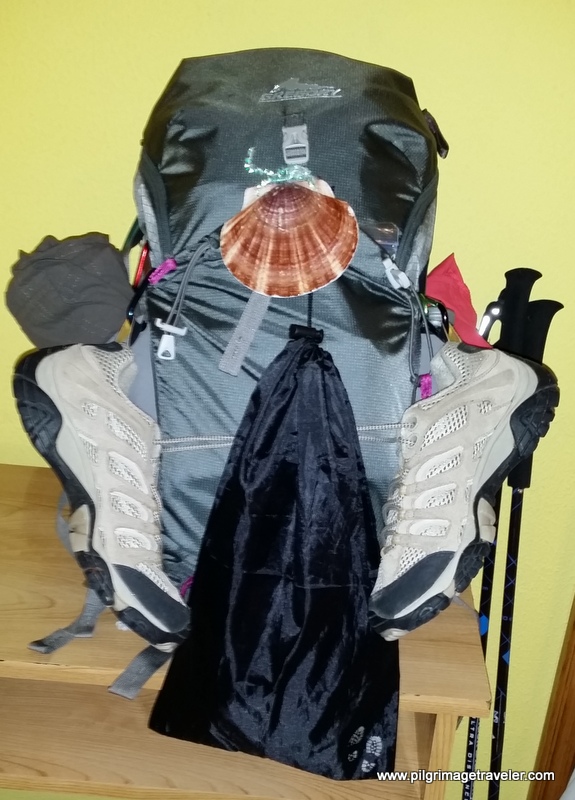

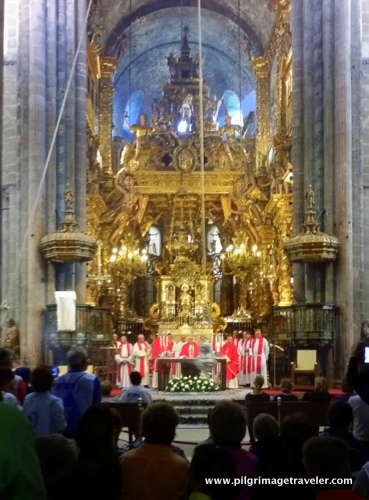

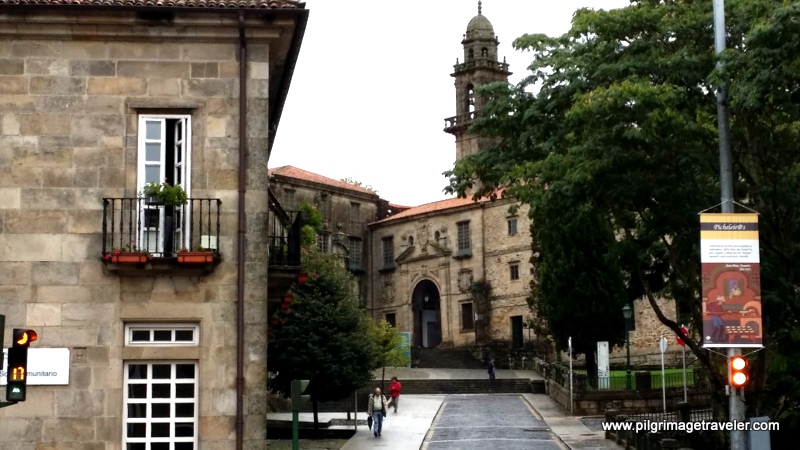
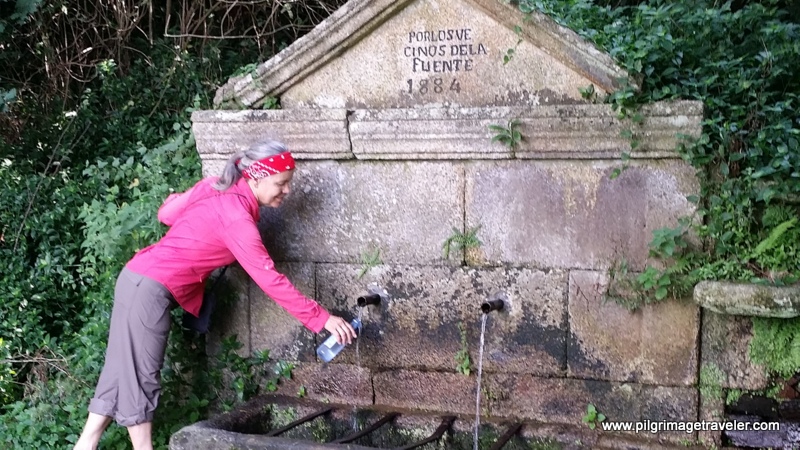
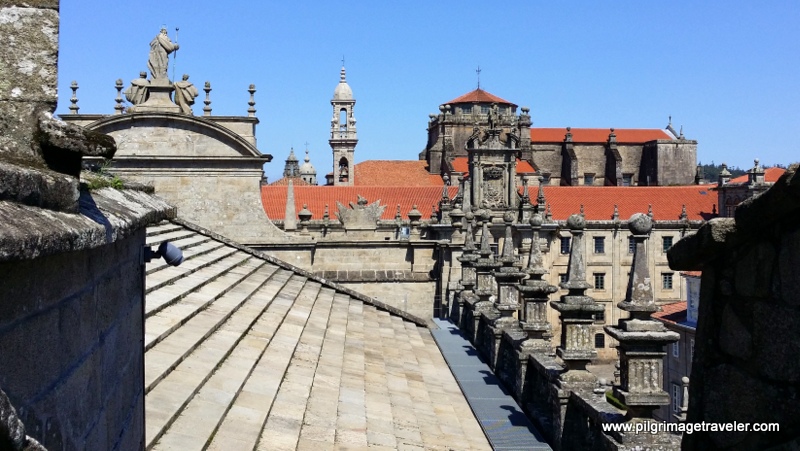












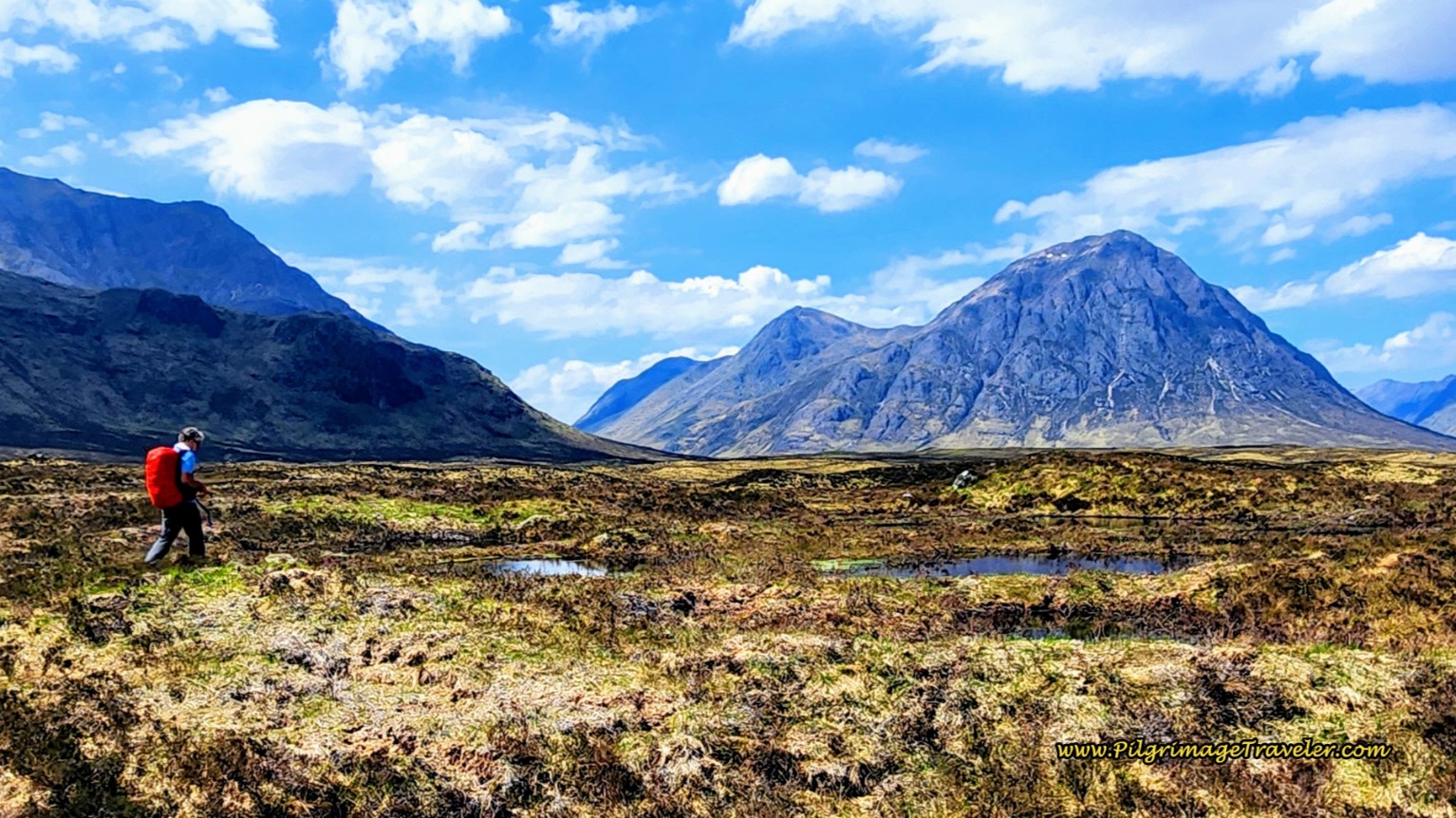

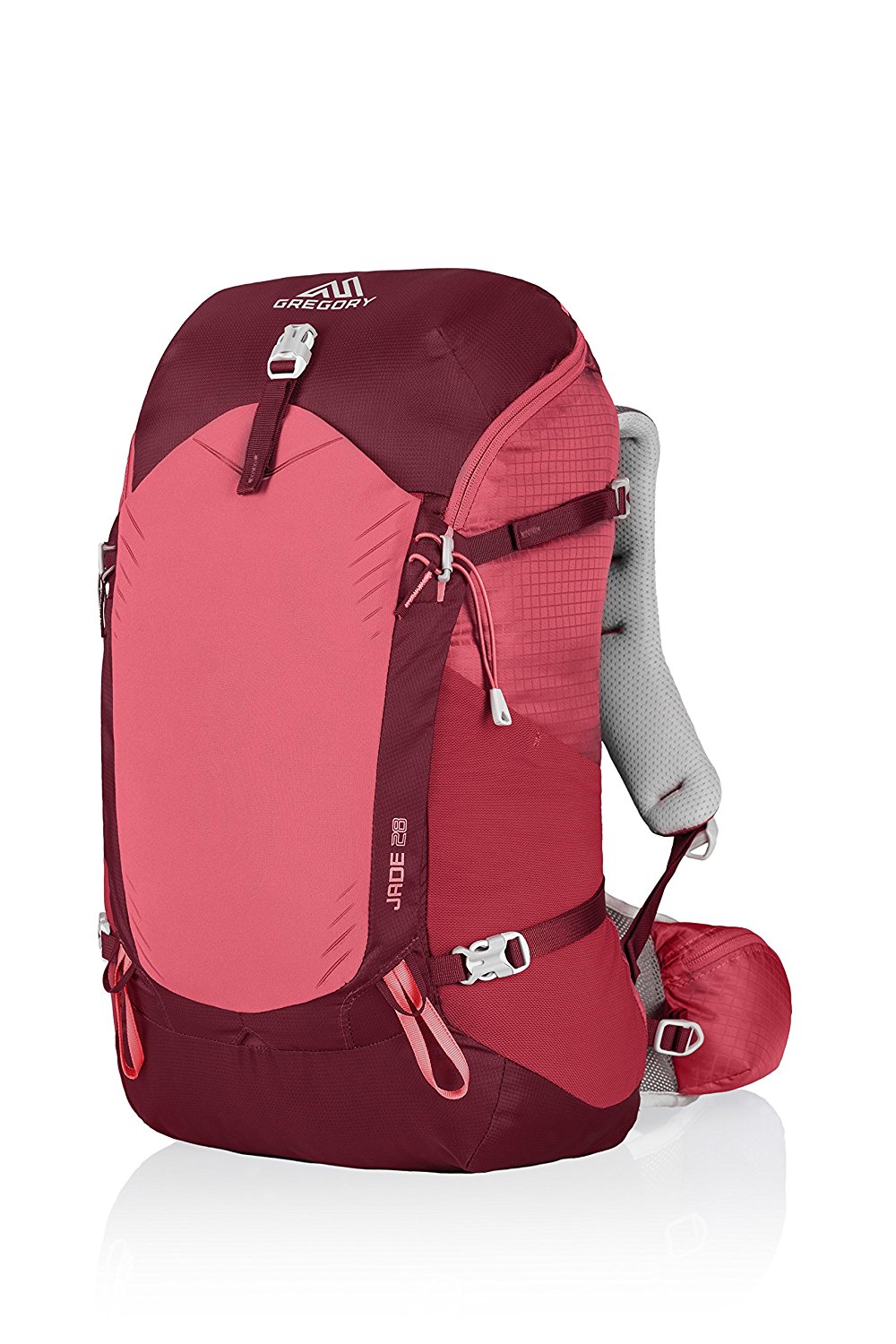

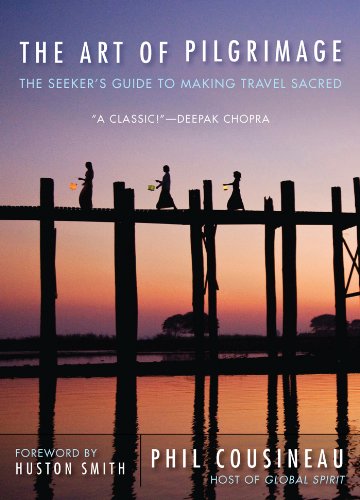


Your Opinion Matters! Comments
Have you had a similar experience, have some advice to give, or have something else you'd like to share? We would love to hear from you! Please leave us a comment in the box below.